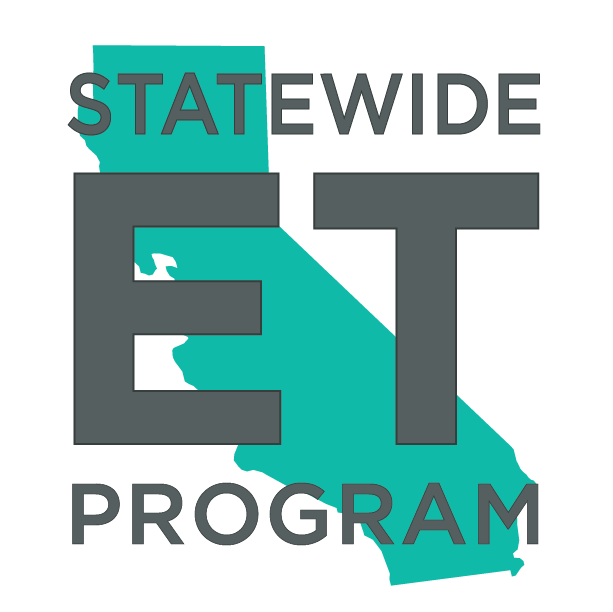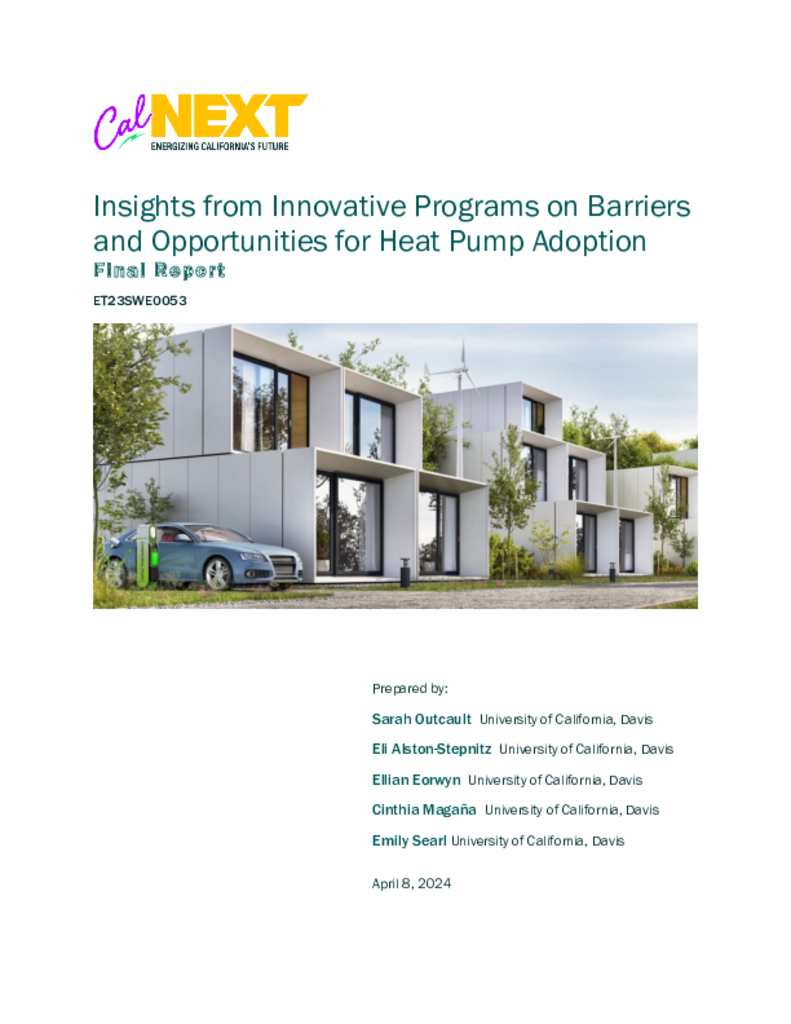ET23SWE0053 - Insights from Innovative Programs on Barriers and Opportunities for Heat Pump Adoption
The goal of this project is to create a resource on programs and strategies that encourage heat pump adoption in new and existing homes by targeting non-cost barriers to adoption. California has identified heat pumps as a keystone technology to its path to decarbonization and plans to prioritize dissemination among low-income and disadvantaged communities. However, many obstacles to wide-spread adoption exist. Utilities, media outlets, and environmental organizations around the country and beyond are developing innovative approaches to address the factors that make heat pumps difficult to adopt to complement the rebates offered to offset first costs (a significant barrier). This research will use literature reviews, technology assessments, and in-depth interviews with utility program managers to develop a public-facing resource that will identify and describe a selection of innovative heat pump programs and articulate design strategies for the creation and implementation of innovative utility and other programs to further promote heat pumps in California by targeting the technology characteristics that hinder adoption.
The research will consist of six phases. First, we will summarize the existing landscape of residential heat pumps in California to provide context for the other research tasks. Second, we will assess heat pump adoptability based on technology characteristics and energy and non-energy impacts, assessing heat pump space conditioning and heat pump water heating separately. These assessments will identify the aspects of heat pumps that hinder adoption considering differential impacts on low-income and disadvantaged communities. Third, we will conduct in-depth interviews with utility program managers across California to learn which technology characteristics have proven especially difficult and what they would find most useful from our research. Interview findings and the technology characteristics assessment will be used to narrow the research focus to address Californian utilities’ priorities for the last phase. Fourth, we will review the literature, and use data mining and web scraping techniques to identify innovative programs and strategies aimed at addressing barriers to heat pump adoption inside and outside of California. Separate searches will be optimized to capture information on programs targeting low-income and disadvantaged communities, for example, by using Spanish language search terms and relevant keywords (e.g., “income qualified”). For all relevant programs identified, we will gather key data points such as overall scope, goals, logistics and implementation, target customer demographics, how problematic technology characteristics are addressed, and success metrics.
In the fifth phase, the information collected will be synthesized in the final report, presenting a range of options for addressing each of the technology characteristics identified as problematic for residential heat pump adoption within new and existing homes in California. We will also highlight specific programs and strategies that target disadvantaged, low-income and hard to reach communities. The information collected will also be compiled and offered in a publicly available resource guide that can serve as an outreach and education source for utilities, policymakers, and the public. In the sixth phase, both the final report and resource guide will be disseminated to California utilities and utility program managers in particular, as well as policymakers. We will facilitate knowledge transfer by identifying contacts who are willing to discuss their programs (included in our research) and connecting them with CA utility program managers who express interest in this opportunity.
This research is unique because it will fill existing knowledge gaps related to obstacles to heat pump adoption by analyzing characteristics of the technology and innovative efforts by utilities, government, grassroots, and other organizations to address non-cost barriers to adoption. The research will also target specific populations, addressing both the uniqueness of California, as well as disadvantaged and hard to reach communities. The project will establish a public repository of our study findings. By consulting with California utilities to define the research focus, we will ensure that the findings provide fresh insights that California utility programs and policymakers can draw upon to create effective strategies to promote heat pump adoption among the state’s disadvantaged, low-income, and other communities.
California has identified heat pumps as a keystone technology on its path to decarbonization. While rebate programs target the initial cost to install heat pumps, there are also non-cost barriers that need to be addressed to encourage widespread adoption. This research study uses the Energy Technology Adoptability framework to assess the challenges and opportunities posed by selected technology characteristics, namely observability, trialability, non-energy impacts, and installation complexity. Drawing on sources from academic and industry literature, public databases, media, and websites, brief case studies were developed on 39 programs to promote heat pump adoption across North America and Europe, highlighting the efforts to address and/or leverage technology characteristics. Strategies to address each technology characteristic were synthesized to illustrate a range of approaches to mitigating challenges associated with heat pump adoption. Details from the programs featured in the case studies were also compiled in a database to enable searches by specific attributes (e.g., geography, technology characteristic, technology type). The report and database can inform strategies and messaging developed by California programs to promote residential heat pump adoption.

